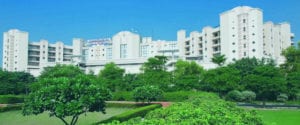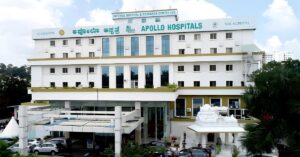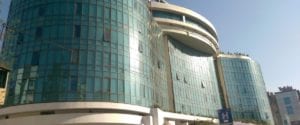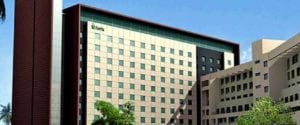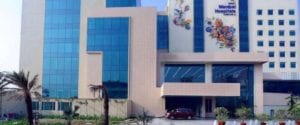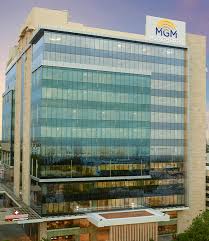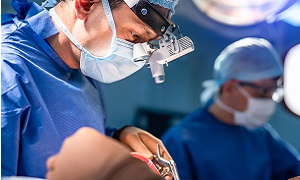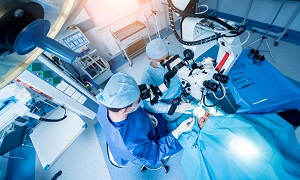Best Stroke surgery Surgeons in India
Best Stroke Surgery Hospitals in India
Hospital Highlights:
- Apollo Hospitals is a private healthcare group in India, with its headquarters based in Chennai. Established in 1983 by Dr. Prathap C. Reddy, the group offers a wide range of medical treatments and services across various specialties.
- It is renowned for emphasizing innovation and utilizing cutting-edge medical technologies into patient treatment.
- Known as India’s first corporate hospital, Apollo Hospitals is often credited for pioneering the private healthcare revolution in the country.
- With clinics and hospitals located all throughout India, Apollo Hospitals is a nationwide healthcare organization. Its presence can also be found in foreign countries.
- Preventive health examinations, medical and surgical treatment, and diagnostic centres are just a few of the services that the Apollo group provides.
- The group has several centres of expertise, including Cardiac Sciences, Neurosciences, Orthopedics, Emergency Care, Cancer Care, and Organ Transplantation.
- City: Chennai, India
Hospital Highlights:
- RIMC is a multi-specialty hospital in a sprawling area of 36 acres located in Chromepet, Chennai, Tamil Nadu, India.
- The facility has 450 beds including 130 critical care beds, 9 operating rooms, modern reference laboratories and radiology services, and is conveniently located near road, rail and air transportation.
- RIMC is led and managed by world-renowned physicians committed to healthcare.
- RIMC offers the broadest range of clinical care, education, and research. The hospital offers state-of-the-art technology and modern treatment facilities designed to provide health care at an affordable cost.
- Rela Institute is driven by patient needs, comfort and confidence.
- City: New Delhi, India
Hospital Highlights:
- Fortis Hospital in Shalimar Bagh is a multi-super specialty hospital that strives to provide world-class patient care by leaving no stone unturned.
- Fortis, Shalimar Bagh, with 262 beds and a 7.34-acre footprint, provides the best level of medical care through its team of doctors, nurses, technicians, and management professionals.
- City: Bengaluru, India
Hospital Highlights:
- Established in 2007, the Apollo Hospitals Bangalore is a 300-bed multispecialty hospital situated in Bannerghatta Road, Bangalore.
- Equipped with the state-of-the-art technology, it is a leading hospital dedicated to providing healthcare needs to patients with compassion and expertise.
- It is the first hospital to have completed the highest number of Robot Assisted Heart Surgeries in India.
- Over the years, it has successfully conducted some of the rarest medical procedures such as spinal angiolipoma excision, autologous chondrocyte implantations, and tibial tuberosity shift with MPSL reconstruction.
- The Apollo Hospitals Bangalore has the reputation of performing the greatest series of airway stents in the country.
- Additionally, the hospital is known for providing comprehensive treatment in specialties such as gastroenterology, urology, gynecology, oncology, colorectal surgery, etc.
- The “The Minimal Access Surgery Centre” (MASC), one of Apollo Hospitals, Bangalore’s premier Centres of Excellence, is devoted to the use of minimally invasive surgical procedures.
- In 2013, THE WEEK-A C Nielsen, Best Hospital Survey ranked Apollo Hospitals Bangalore as the 2nd best multi-speciality hospital in Bangalore.
- City: Mumbai, India
Hospital Highlights:
- Gleneagles Global Hospital The 450-bed facility comprises of 17-stories, housing state-of-the-art infrastructure, and advanced medical care facilities.
- The hospital offers end-to-end clinical, surgical, and diagnostic services. It is equipped with a team of eminent medical professionals aided by qualified nurses and medical staff
- The Hospital offers advanced Endoscopic procedures, Hepatobiliary and Liver Surgeries, Surgical and Medical Gastroenterology, Bariatric Surgery, and Robotic surgery.
- The hospital is a center of excellence for Orthopedics, Joint Replacement, Knee Replacement, and Hip Replacement surgery.
- City: Hyderabad, India
Hospital Highlights:
- CARE Hospitals were established in the year 2000, by CARE Group.
- The multispecialty hospital has 435 beds, including 120 critical care beds, with an annual inflow of 180000 outpatients and 16,000 in-patients.
- The hospital provides specialty medical services in Cardiology, Cardiothoracic Surgery, Pediatric Cardiology, Pediatric Cardiothoracic Surgery, Neurology, Neurosurgery, Nephrology, and Urology.
- The hospital has the first dual source, 128 slice CT scanner (for high precision cardiac imaging) – the first of its kind in south India.
- The hospital offers a wide range of accommodation facilities for the convenience of its varied patient base, ranging from general wards to super deluxe rooms.
- City: Mumbai, India
Hospital Highlights:
- Fortis Hospital in Mulund is a 315-bed multi-speciality tertiary care hospital with five JCI accreditations that offers a wide variety of diagnostic and treatment services. The Fortis Hospital in Mulund delivers patient-centred treatment with cutting-edge technology, highly skilled and experienced surgeons, and paramedical staff.
- This institution houses Maharashtra’s largest multi-organ transplant centre. It is also the first heart transplant centre in western India to conduct 100 or more consecutive heart transplants in under four years. It is the only hospital in the city to have multi-organ transplants and has handled the youngest patient for angioplasty. Fortis Hospital Mulund now boasts the first advanced surgical robot in central Mumbai.
- Cardiology and heart surgery, urology, nephrology, neurosciences, orthopaedics, digestive care, emergency and critical care, and maternity care are among the services provided by the hospital.
- City: New Delhi, India
Hospital Highlights:
- Manipal Hospitals, Dwarka, is a super-specialty hospital in Dwarka, New Delhi, which is a part of Manipal Hospitals Group.
- The hospital aims to provide the best treatment on par with international standards at a fraction of the cost.
- Equipped with 380 beds, the hospital is also one of the new age hospitals which are equipped fully with state-of-the-art infrastructure, cutting-edge technology as well as the latest and advanced clinical practices. The hospital also has 13 modular Operation theatres with 118 beds which are solely meant for critical care.
- The hospital comprises internationally acclaimed doctors and highly professional and experienced hospital and medical staff who are able to provide preventive, therapeutic, and diagnostic services all under one roof.
- City: Chennai, India
Hospital Highlights:
- Located in Chennai, India, MGM Healthcare is a top multispecialty hospital that provides all medical services under one roof.
- Since its founding in 2019, MGM Healthcare has quickly become a leading national referral centre, creating several innovative flagship initiatives.
- MGM Healthcare combines next-generation medical and digital technologies to provide better patient results.
- With 12 centres of excellence, more than 400 inpatient beds, 100 intensive care unit beds, and 24/7 emergency care, MGM Healthcare leaves no chance in redefining the patient experience in Chennai.
- MGM Healthcare boasts 250+ expert doctors across 30+ departments, including Cardiology, Pulmonology, Neurology, Obstetrics & Gynaecology, and more.
- They house 12 specialized Centres of Excellence, including Neurosciences, Orthopaedics, and Multi-Organ Transplantation.
- Their team of doctors, nurses, and paramedics works together to give every patient individualized treatment.
Hospital Highlights:
- Lilavati Hospital & Research Centre is India’s premier multi-speciality tertiary care hospital and has been recognised as a global medical excellence centre.
- Lilavati Hospital & Research Centre has built an unrivalled level of trust with its patients over the years, thanks to a solid foundation that comprises cutting-edge facilities, the best medical competence, research, education, and charity endeavours.
- The hospital is quite proud of the fact that it now serves patients from all kinds of backgrounds, not just from the United States but from all around the world.
- The hospital has a total of 323 beds, one of the largest Intensive Care Units (ICUs), 12 Operation Theatres with modern amenities, over 300 consultants, and almost 1,800 personnel.
Stroke
When one of the blood vessels in the brain ruptures and bleeds and the blood supply to the parts of your brain is interpreted, this prevents the brain from receiving essential nutrients and oxygen. This can cause damage as well as the death of brain cells within a few minutes.
A stroke is considered a medical emergency and it is extremely important that prompt treatment is provided to reduce brain damage or other complications.
Fewer people die of stroke today as compared to the past due to advanced treatment.
Symptoms of Stroke
If you or anybody is having a stroke, it is important to pay attention to the symptoms as they begin, as treatment is more effective if it is provided sooner. Some of the signs of a stroke can include:
- Paralysis
- Confusion
- Trouble speaking or understanding
- A feeling or numbness or weakness in the arm, face, and leg on one particular side of the body
- Trouble walking and/or loss of balance
- Slurring speech
- Vision problem
- Severe and sudden headache
- Dizziness
If you see someone with signs of strokes, don’t wait to see if the symptoms stop. Call a local emergency immediately, as the sooner a stroke is treated, the more the chances are that brain damage and disability can be prevented.
Types and causes of Stroke
There are two different causes of stroke: a blocked artery, which is called ischemic stroke; or the leaking and/or bursting or a blood vessel, which is called a hemorrhagic stroke.
Ischemic stroke: This kind of stroke is more common and it occurs when the brain’s blood vessels get narrowed or blocked. This causes the blood flow to get reduced severely. Blocked and narrowed blood vessels are a result of fatty deposits that build up in the blood vessels. It can also be caused by blood clots or other debris that can travel through the bloodstream and lodge in the brain’s blood vessels.
Hemorrhagic Stroke: Hemorrhagic stroke is caused when a blood vessel in the brain leaks and ruptures. Brain hemorrhages can happen due to many conditions that affect the blood vessels. Some of these factors can relate to hemorrhagic stroke:
- Uncontrolled high blood pressure
- Bulges at weak spots in your blood vessel walls
- Overtreatment using blood thinners
- Trauma (such as an accident)
- Protein deposits in the walls of the blood vessel leading to weakness in the vessel wall
- Ischemic stroke leading to hemorrhage
Transient ischemic attack (TIA)-
A transient ischemic attack also referred to as a ministroke, is a temporary period of symptoms that are similar to those that one has in a stroke. It doesn’t cause permanent damage. It can be caused by a temporary decrease in blood supply to the brain, which can last for as little as five minutes.
It is important to seek emergency care, as it is not possible to know whether you had a stroke or TIA by looking at the symptoms alone. If you had a TIA, it could mean you have a partially blocked or narrowed artery that leads to your brain. Having a TIA can increase your risk of having a full-blown stroke.
Diagnosis of Stroke
While assessing a stroke patient, it is important to determine whether the patient is suffering an ischemic or hemorrhagic stroke. Once this is determined, the proper treatment can begin. Uuslaly the first test that is performed is a CT scan or an MRI.
CT scan
CT scanning is the combining of special x-ray equipment with multiple computers to produce images of the inside parts of the body. The CT of the head is used to detect a stroke from a blood clot or bleeding within the train. CT autography might also need to be performed to improve the detection and characterization of stroke.
MRI
MRI is another method, where a powerful magnetic field, radio frequency pulses as well as a computer is used to produce detailed pictures of organs, bones, soft tissues and other internal body structures. It can also be used to image the cerebral vessels which is called MR angiography. Using MRI of the head, brain damage from a stroke can be assessed.
Your doctors might also use other methods to help in determining the type, location and cause of a stroke. These can include blood tests, Electrocardiogram, carotid ultrasound and cerebral angiography.
Treatment options for Stroke
Treatment for ischemic stroke
Treatment for Hemorrhagic Stroke
This kind of stroke requires you to find and control the bleeding. The most common reason for this kind of stroke is uncontrolled high blood pressure. If this was your reason, you will need medicine to lower it.
If the stroke was caused by an aneurysm, your doctor can clamp the broken vessel closed or thread a tiny coil through it in order to prevent the blood vessel from bursting again.
The doctor may perform surgery to remove the blood if the area of bleeding is large. Surgery is also used to repair problems related to blood vessels, which are associated with hemorrhagic strokes.
Once the cause of your stroke is treated, your doctor will work with you to lower your chances of experiencing another one. They might help you in keeping your blood pressure in a healthy range.
Risks of Stroke
The following factors can increase the risk of having a stroke
- Being overweight or obese
- Physical inactivity
- Heavy drinking
- Use of illegal drugs like cocaine
- High blood pressure
- Cigarette smoking or exposure to secondhand smoke
- High cholesterol
- Diabetes
- Obstructive sleep apnea
- Cardiovascular diseases, which can include heart failure, heart defects, heart infection or abnormal heart rhythm
- Having a personal or family history of stroke, heart attack or transient ischemic attack
Complications of Stroke
A stroke can lead to temporary or permanent disabilities which depend on how long the brain attacks the blood flow and which part was effective.
Some of the complications include:
- Paralysis or loss of muscle movement- You might become paralyzed on one side of your body as a result of stroke or even lose control of certain muscles such as the ones on one side of your face.
- Memory loss or difficulty in thinking- Many people who have experienced strokes have had some difficulty in thinking, reasoning and understanding and have also shown signs of memory loss.
- Difficulty in talking or swallowing- A stroke can affect control of the muscles in the mouth and throat, which makes it difficult for one to talk properly, eat or swallow. One might also have difficulty with language, including understanding speech or reading.
- Emotional Problems- People who have suffered from strokes can also experience difficulty in controlling their emotions and they might develop depression as well.
- Pain- Pain, numbness and such sensations can also occur in parts of the body, which is affected by stroke.
- Changes in behavior and self-care ability- People who have suffered strokes can also become more withdrawn. They might need help with grooming or daily chores.
Rehabilitation
Prevention of Stroke
It is important to follow the following steps and strategies if you are looking to prevent stroke:
- Controlling high blood pressure or hypertension- This is one of the most important things that one can do to reduce the risk of stroke. If you’ve suffered a stroke, lowering your blood pressure can prevent a further TIA or a stroke. Along with medications, you will need to make changes to your lifestyle to treat high blood pressure.
- Managing Diabetes- Proper diet, exercise and maintaining a healthy weight can help in keeping the blood sugar in a healthy range. This can decrease the risk of stroke.
- Quitting Tobacco Use- Smoking raises the risk of stroke not just for smokers and non-smokers who are exposed to second hand smokers.
- Lowering the amount of cholesterol and saturated fat in your diet- Eating less cholesterol and fat, especially saturated fat and trans fats can help in reducing the buildup in the arteries. If your cholesterol can’t be controlled through dietary changes, then your doctor might prescribe you a medication for lowering cholesterol.
- Eating a diet rich in fruits and vegetables- A diet that contains five or more daily servings of fruits and vegetables can also help in reducing the risk of stroke.
- Regular exercise- If you exercise regularly, it will significantly reduce the risk of stroke as well. Exercise can also help in losing weight, controlling diabetes as well as reducing stress. Try to provide your body with at least 30 minutes of moderate physical activity daily.
- Reducing alcohol consumption and avoiding illegal drugs- If you consume too much alcohol, it can also lead to a high risk of blood pressure, ischemic strokes and hemorrhagic strokes. However, moderate drinking will help in preventing ischemic stroke as well as decreasing the clotting tendency of the blood. Street drugs such as cocaine and methamphetamine can also increase the risk of a TIA or stroke.
There are also preventive medications that can be recommended by your doctor, to help reduce your risk of stroke. Antiplatelet drugs can make the platelets in your cells less sticky and less likely to clot. Aspirin is the most commonly used antiplatelet medication. It is also important that your doctor recommends the correct dosage of aspirin for you.

